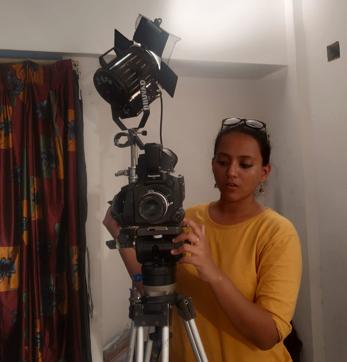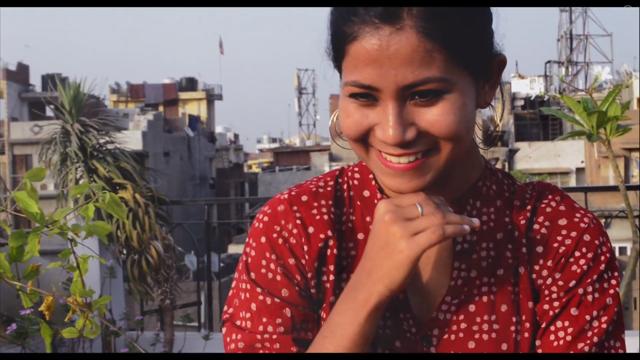A tale of the many-spirited
A group of young artistes speak about their experience of making a short film on the Muslim queer population
How often do we stumble upon fleeting, inexact feelings and fail to find a word to identify with? If only an extended siesta ending into the evening and the ensuing dejection had a word for it! If only the scratching of nails against the wall and the almost immediate tingling in the neck had a name. And what if none of that had been short-lived? Language is at once comforting and empowering. An ensemble of four young women — Maniza Khalid, Ghania Siddiqui, Tirna Sengupta and Talat Shakeel, realised the need to communicate one such search for an epithet and made Hum Jinns (the many-spirited) — a short film about the identity struggle of the Muslim Queer. As Maniza puts it, “It was an attempt to find more of myself within the limits of my mother tongue.” We speak to these young artistes to know about each of their especial impressions of the production.


In search of a name
Maniza Khalid was born and raised in Jeddah, Saudi Arabia. She has been based in Delhi only for the past five years. On being asked what was the trigger to the script for the production or its title, she says, initially, she had written it as a poem to be read in isolation. “We altered it in parts to express the same ideas through multimedia. I wanted to find words for the forbidden in Urdu, as the lovely artwork showcasing desi queer identities were a bit too glamorous to serve my purpose. Hum Jinns was brought to my notice by a research scholar from JNU (Jawaharlal Nehru University),” she says. Maniza, who is the protagonist in the short film, goes on to share that what struck her was the openness of the words. She explains, “Cultures have their own way to define the fluid or to question the non-binary. In Urdu, it would translate into, Hum Jinsi abh jayaz hai (Being queer is now legal). But one cannot say if it’s about sexual orientations or particular gender identities. We wanted that vagueness to call out to the marginalised.”

The director’s cut
After completing her post-graduation in mass communication, Mumbai-based filmmaker Ghania Siddiqui says she was more than happy to contribute to the project. The production follows her other short films, Cities and Lovers (2018) and Naaz Hotel (2019). Ask her about the choice of location, which had a terrace with a garden swing and flowers and plants around, she says, “It happened organically. In the past five years, I have done much of my photography at New Friends Colony in New Delhi, yet Maniza’s house particularly interested me. While at work, I draw references from the area we are working in. So, I constantly asked Tirna (the dancer in the film) and Maniza to check how they felt about the space. I noticed the terrace justified the essence of the poem. That is why the camera shifts from an enclosed space to a more open one. Maniza is seen in the staircase until she reaches the terrace to be one with the unfettered self that Tirna represents.”

Dancing to words
Bharatnatyam dancer Tirna Sengupta is taking a year-long break after completing her post-graduation in English. She keeps travelling between Siliguri, her home town, and Delhi while dancing in balconies, university classrooms and on the streets to practise lessons given by her teacher. To answer, why Bharatnatyam was used to depict the story, she says, “Bharatanatyam has no vocabulary to express a 21st-century, queer Muslim’s life. So, I invented a new language of movement consulting my many years of training in dance. I was looking for cultural equivalents that would express and accentuate the writer’s ideas. Indian classical dance forms have the capacity to expand even the smallest emotion and show its nuance. That helped me explore the complexity of this topic. Another challenge was dancing in front of the camera.”
Talat Shakeel, the sound designer, has beautifully added the sound of Aazaan to Bharatnatyam. The music stirs up a culture’s homogeneity.
Catch your daily dose of Fashion, Health, Festivals, Travel, Relationship, Recipe and all the other Latest Lifestyle News on Hindustan Times Website and APPs.



